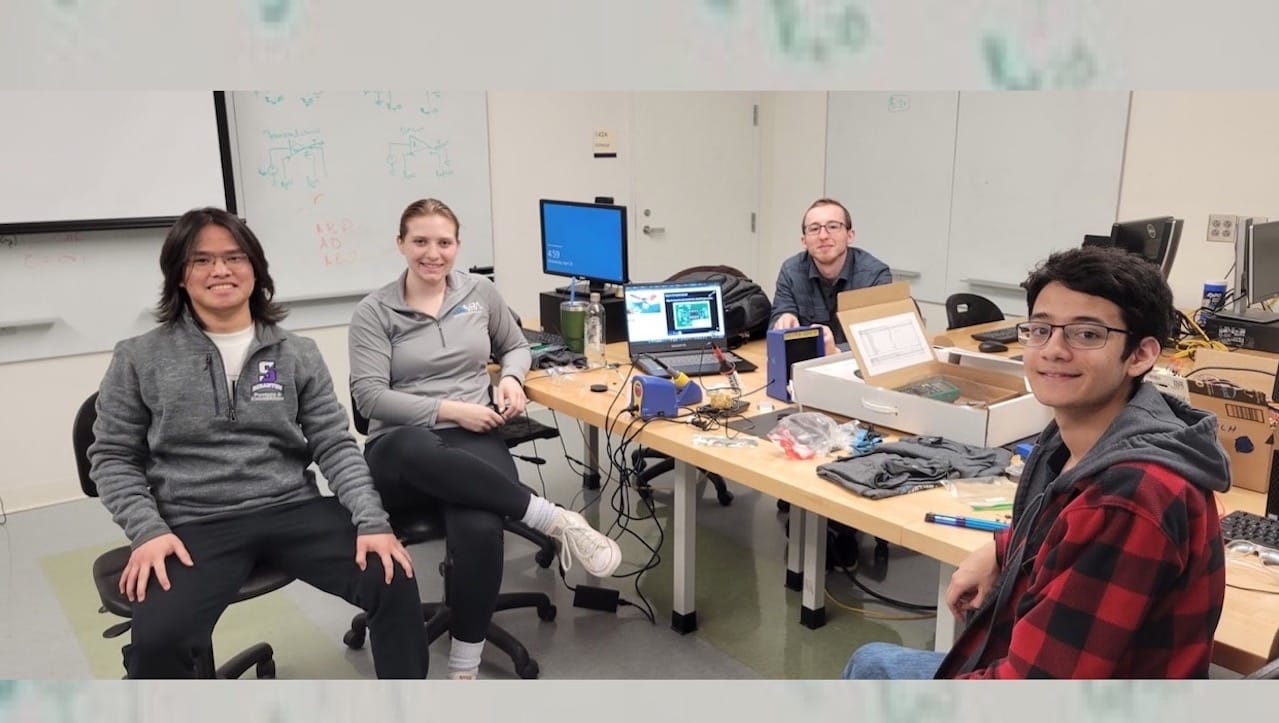NASA Launch Includes Scranton Student Project

For the second year in a row, a device built by University of Scranton undergraduates was among approximately 60 devices build by college students from across the U.S. and launched into space by NASA in a rocket. The devices were built as part of a special NASA program called the RockOn! through which students were sent kits to build atmospheric sensing devices, called payloads. The devices were built and tested on campus then sent to the RockOn! program headquartered in Colorado. NASA launched into space about 60 devices build by undergraduate students on June 24.
The University students who participated were: Cuong Nguyen ’23, Ashley, an electrical engineering major; Gerard Piccini ’25, Monroe Township, New Jersey, an electrical engineering major; Ellie Rosentel ’22, Kingston, who earned her bachelor’s degree in electrical engineering in May from the University; and Mergim Berisha ’22, Wilkes-Barre, who earned his bachelor’s degree in electrical engineering in May from the University.
Following the launches, the devices with the data collected will be returned to the University for the students to then study further.
“This unique project provides an opportunity for students to obtain hands-on experience in developing space-flight experiments, which is vital in developing future scientists and engineers,” said Giovanni Rosanova, chief of the NASA Sounding Rockets Program Office at NASA’s Wallops Island Flight Facility, who noted this is the 14th year that “the NASA Sounding Rocket Program has provided a suborbital rocket flight for undergraduate university students to fly their experiments into space.”
Support for this project was provided through the NASA Pennsylvania Space Grant Consortium, of which The University of Scranton is now an affiliate. The PA Space Grant is part of the national Space Grant mission to expand opportunities for U.S. citizens to learn about and participate in NASA’s aeronautics and space programs by supporting and enhancing science and engineering education, research, and outreach programs. Additional NASA Space Grant activity at the University of Scranton includes a project by mathematics professor Joseph Klobusicky, Ph.D. entitled, “Phase Transitions in Two-dimensional Foams,” and an upcoming project led by physics and engineering professor Nathaniel Frissell, Ph.D. entitled, “Development of a Low-Cost Low-Power Ionosonde.”






